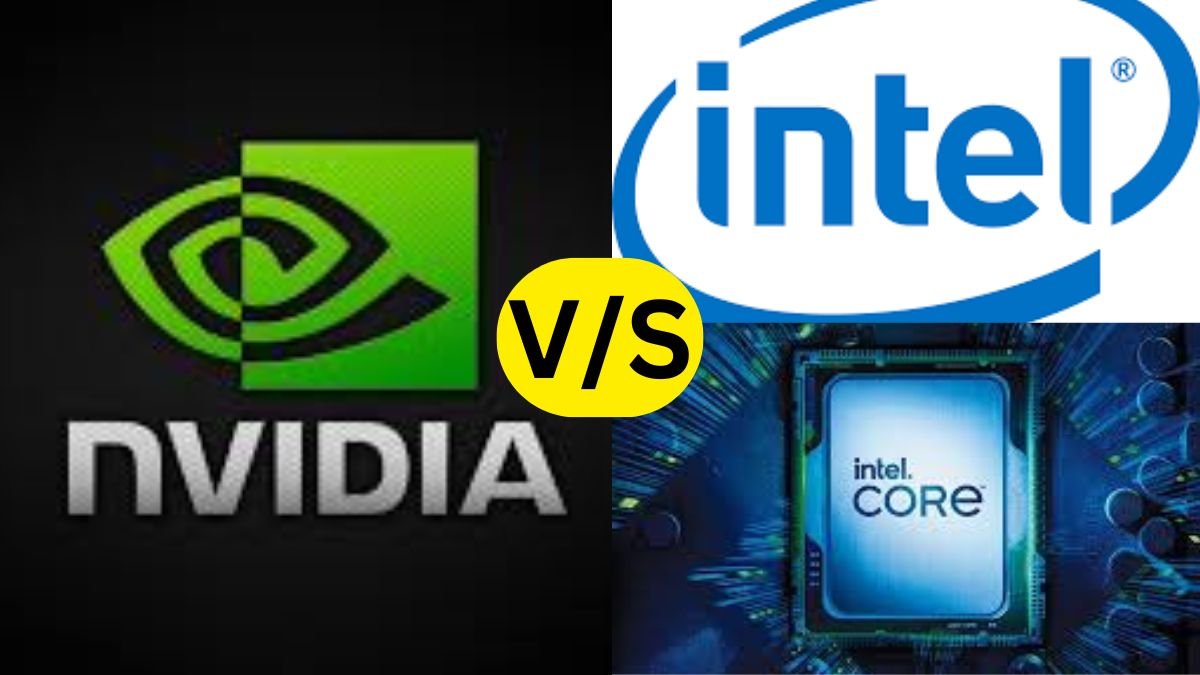In 2018, it intended to get Nvidia for about $20 billion. Such a sum could have looked astronomical at some point, especially for a graphics company. To address the costs of such participation, the board became concerned with the price and the issues of implementation of these strategies. Otellini pulled his proposal, and Intel went elsewhere.
Intel vs Nvidia:- Fast-forward to today and that decision’s ramifications could not be clearer. Nvidia is now worth more than $3 trillion, a tech behemoth that has successfully surfed the AI wave that Intel’s management, in part, saw coming. Some Intel leaders understood that Nvidia’s designs would be essential in data centers a prophetic vision for a world where artificial intelligence is a dominant force.
However instead of buying out Nvidia Intel sought to consolidate through internal development. The company then initiated Larabee, a CPU-GPU in development under present company CEO Pat Gelsinger. The project was technologically innovative but could not gain the required momentum. Much later, Intel dipped its feet into AI by acquiring AI companies such as Nervana Systems, Movidius, and Habana Labs; none of which could replicate Nvidia’s success.
The story doesn’t end there. Intel had a second opportunity to leverage AI when it could have supported OpenAI at its formative non-profit stage (2017-2018). Still, then-CEO Bob Swan shot it down, thinking that AI models were not yet close to being ready for prime time.
In the fast-paced world of tech, timing is everything. Sometimes Intel vs Nvidia, the biggest opportunities come disguised as risky decisions, and Intel’s 2005 boardroom discussion perfectly illustrates this principle.
Aspect Details Proposed Deal Nvidia Acquisition Value~$20 billion Proposed by Paul Otellini (Intel CEO)Main Concerns• High acquisition cost• Integration challenges
Key Strategic Decisions Intel vs Nvidia
- Path Not Taken:
- Nvidia acquisition
- Early investment in OpenAI
- Path Chosen:
- Internal development (Larabee project)
- Smaller AI acquisitions
Timeline of AI-Related Acquisitions of Intel vs Nvidia
Year Company Focus Area2016
Nervana Systems AI Hardware 2016 Movidius
Vision Processing2019
Habana LabsAI Processors
Current Market Position (2024)
Company Market Cap
Primary Focus Nvidia$3+ trillion
AI/Graphics/Data CenterIntel
Under $100 billion CPUs/NPUs/Foundry
Lessons Learned from Intel vs Nvidia
| Vision and courage are as crucial as technical excellence Playing it safe can sometimes be the riskiest strategy Market timing matters in technological evolution Early market entry can lead to market dominance |
Intel was established in July 1968, by American engineers Robert Noyce and Gordon Moore. Unlike many of the popularised stories of the early start-up businesses of Silicon Valley that originate in a youthful entrepreneur developing the business from a garage, Intel was established with $2.5m provided by a venture capitalist of the then ‘new ‘ concept, Arthur Rock. Starting with Intel, the founders of the company were middle-aged experienced technologists with prior track records.
Noyce was the carrier in 1959 of the silicon integrated circuit while being the general manager of Fairchild Semiconductor, a division of Fairchild Camera and Instrument. Moore was the vice president for research and development for Fairchild Semiconductor.
Soon after the formation of Intel, Noyce, and Moore employed other Fairchild employees; prominent among them was Andrew Grove, a Hungarian-born American businessman. Intel’s first three decades in operation were defined by Noyce, Moore, and Grove who took turns between being chairman and CEO.
Why did Intel pass on buying Nvidia?
The board was concerned about the high acquisition cost ($20 billion) and potential challenges in integrating the two companies’ different cultures and technologies.
What was Project Larabee?
Larabee was Intel’s internal graphics project, led by Pat Gelsinger, which attempted to create a hybrid CPU-GPU using x86 technologies. The project was eventually discontinued.
Did Intel have other opportunities in AI?
Yes, notably in 2017-2018, Intel had the opportunity to invest in OpenAI when it was still a small non-profit research firm, but then-CEO Bob Swan declined.
How does Intel compete in AI today?
Intel currently offers the Gaudi 3 AI chip as a more affordable alternative to Nvidia’s products and focuses on NPUs for consumer technology.
What’s the current market gap between Intel and Nvidia?
As of 2024, Nvidia’s market cap exceeds $3 trillion, while Intel’s is under $100 billion, showing the dramatic impact of these historical decisions.
| The Impact Today of Intel vs Nvidia | Intel’s current focus: NPU development Consumer technology Foundry services Playing catch-up in AI market |
| Looking Forward to Intel vs Nvidia | Intel continues to compete in the AI space, but the story serves as a reminder that strategic decisions made today can have trillion-dollar implications tomorrow. The company’s experience offers valuable lessons for corporate decision-makers about balancing risk, vision, and market opportunity. |
